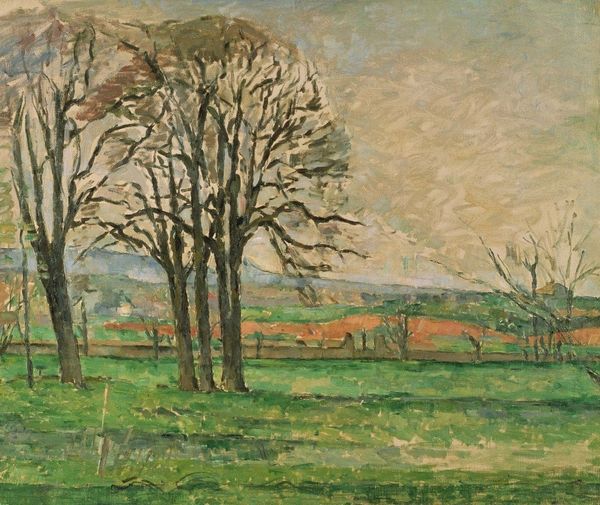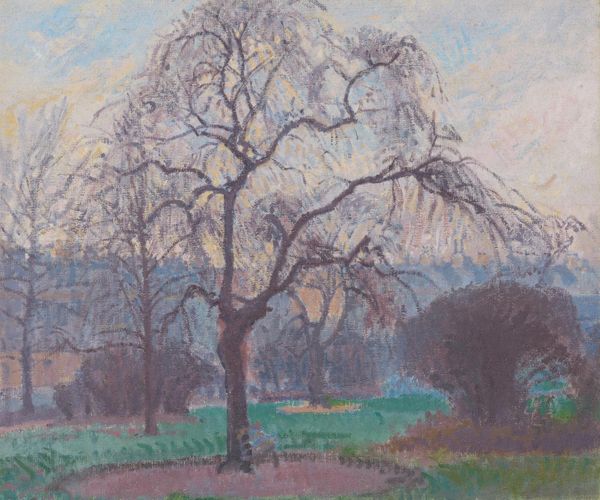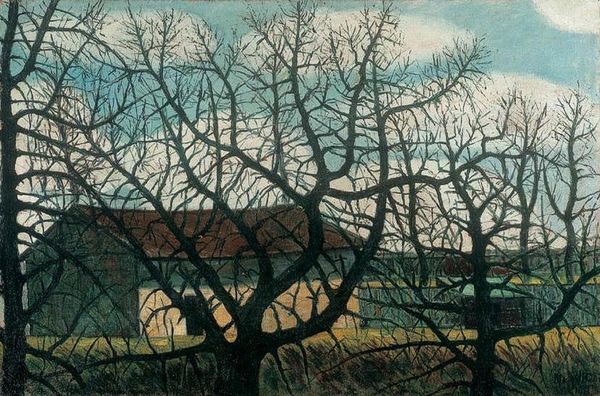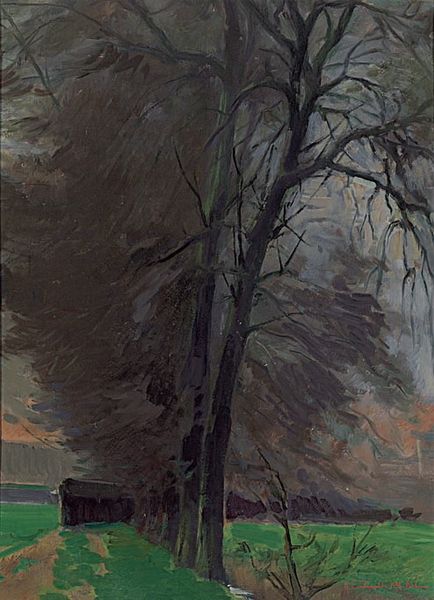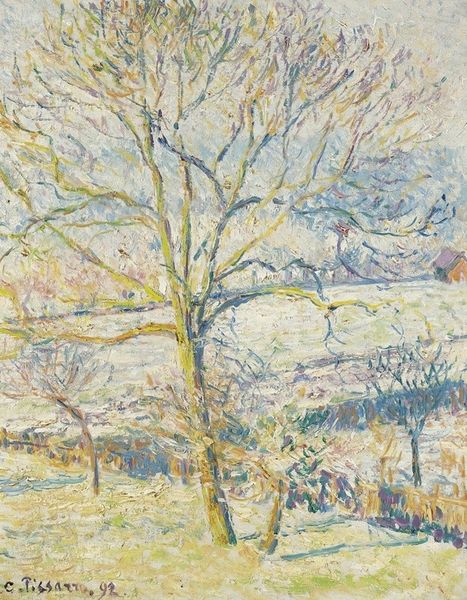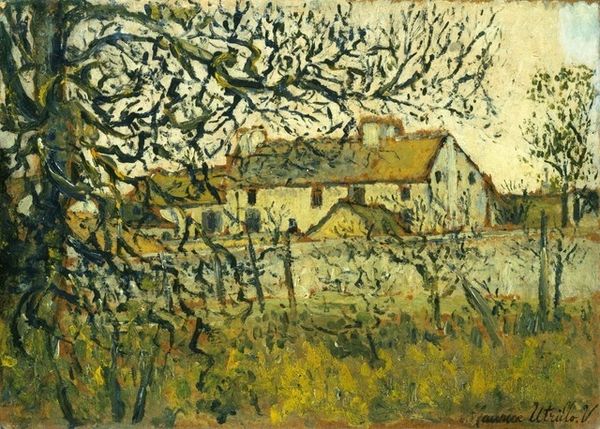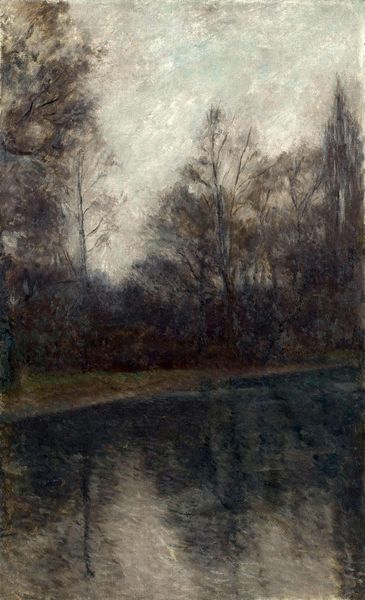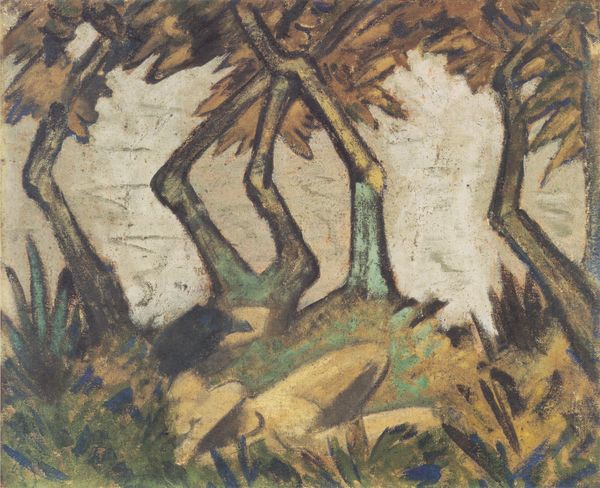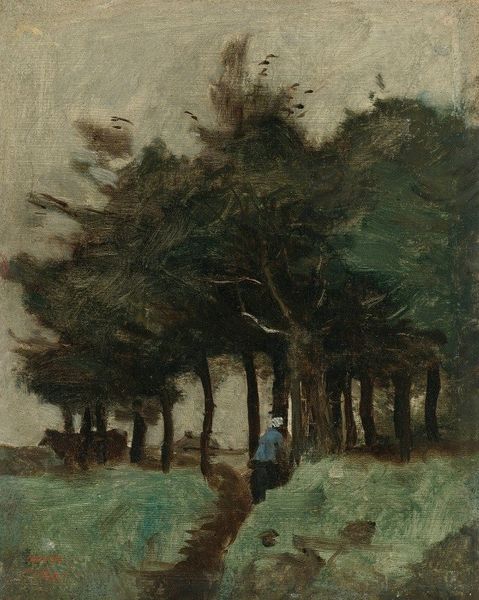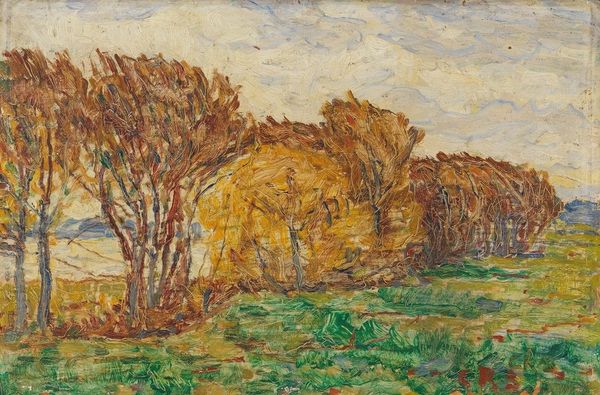
painting, oil-paint, impasto
#
dutch-golden-age
#
painting
#
oil-paint
#
landscape
#
perspective
#
form
#
oil painting
#
impasto
#
line
#
cityscape
#
realism
Copyright: Public Domain: Artvee
Curator: This is "Foothpad with Willow and a Village on the Horizon," an oil painting created around 1891 by Richard Nicolaüs Roland Holst. Editor: There's a kind of hushed, dreamlike quality to it, isn’t there? The somber palette and the skeletal tree in the foreground give it a slightly melancholy feel. Curator: It is striking how he depicts rural life here. It coincides with a period of growing industrialization, and, arguably, a yearning for simpler times started to take root. One sees art reflecting that tension quite often. Editor: That dominant willow, though—it’s so prominent, almost like a guardian figure watching over the village. In a way, this picture evokes both melancholy and resilience to me. The tree is not only there, but defiant. Curator: Indeed, the willow frequently surfaces in folklore and art. Its association with mourning and loss dates back centuries, which would likely have been known to viewers at the time. Simultaneously, though, it represents resilience and new life given its unique capacity for rapid growth. Editor: And consider the impasto. It gives the entire scene this palpable texture, almost as if we’re looking at it through a slightly blurred memory. Curator: The impasto technique used really captures the way line and form are prioritized. Notice how the application and distribution of pigment serve not so much the replication of observed phenomena as the building of something felt by the artist and hoped for by the viewer. It’s quite unique. Editor: Yes! I find myself pondering the symbolism inherent in cityscapes – what draws people together to make such things in the first place, the human aspiration towards permanence that they represent. It’s all so subtly woven into the fabric of this landscape. Curator: Looking at Holst’s work through a socio-political lens illuminates its role in reflecting societal values of the late 19th century: ruralism, stoicism, perseverance, and perhaps, even a degree of collective nostalgia for the past. Editor: I leave with this image of that gnarled, solitary tree which prompts me to think about the weight of history and our emotional connections to the landscapes that surround us. Curator: Yes, it also brings to light how landscapes are invariably about power: social power and our place in the natural world. Food for thought, certainly.
Comments
No comments
Be the first to comment and join the conversation on the ultimate creative platform.
